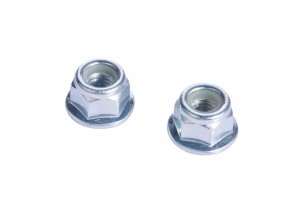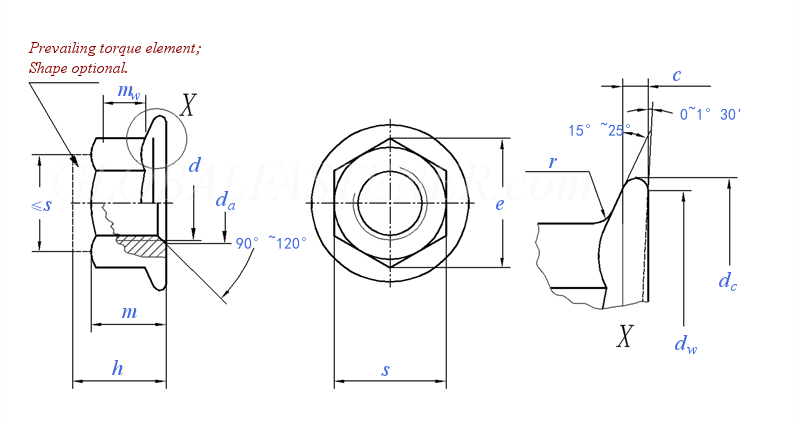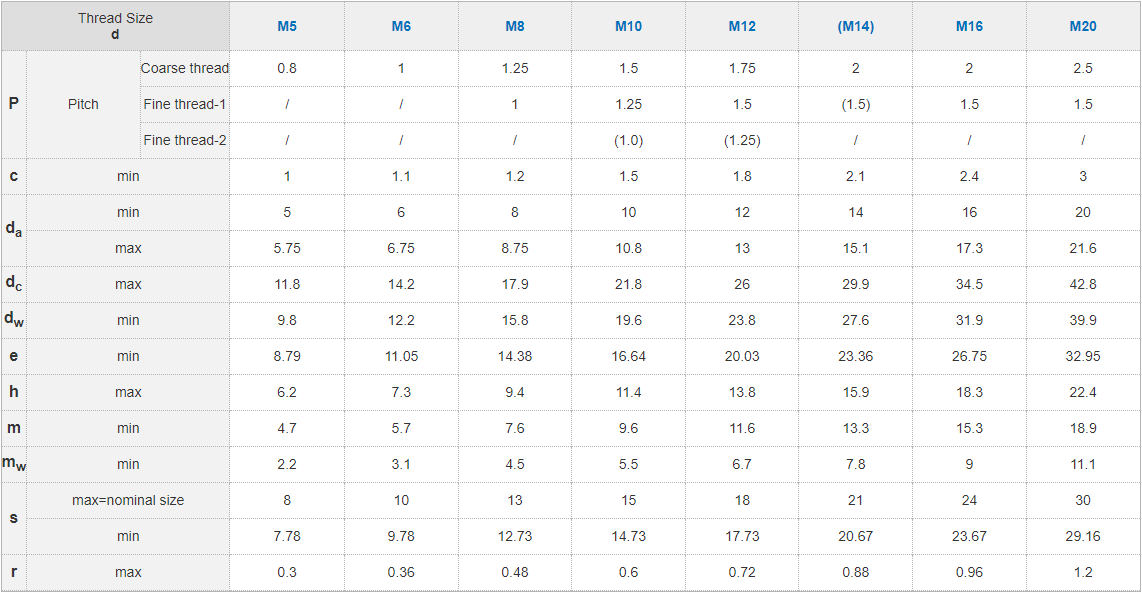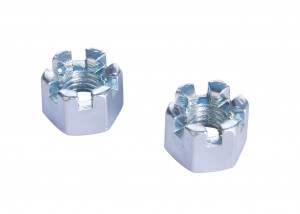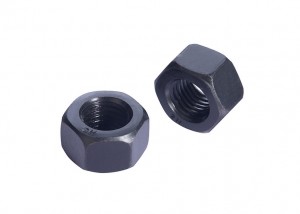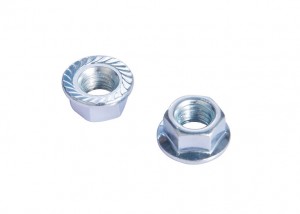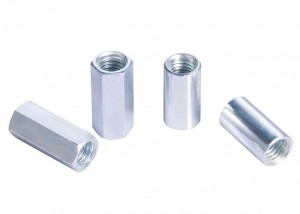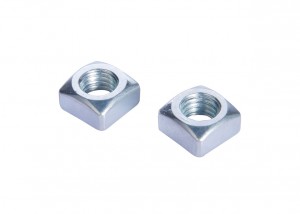How to use this anti-loosening nut, now I will introduce the use method and prevent the nut from loosening.
A lock nut is a nut, a part that is screwed together with a bolt or a screw to act as a fastening part, and an original part that must be used in all production and manufacturing machinery. Threads, lock nuts and screws of the same size can be connected together.
The superior anti-vibration performance of the lock nut: when the thread is tightened, the crest thread of the bolt tightly enters the 30° wedge-shaped slope of the nut and is clamped, and the normal force exerted on the wedge-shaped slope is the same as the bolt's normal force. The axis forms an included angle of 60° instead of 30°. Therefore, the normal force generated when the anti-loose nut is tightened is much larger than that of the ordinary standard nut, and it has a great anti-loose and anti-vibration capability.
Flange lock nuts include non-metal nested nuts, embedded steel sheet nuts, embedded spring wire nuts, flange indentation nuts, flattened nuts, etc. Non-metallic nested nut DIN1666 (ie flange lock nut): This lock nut has anti-loosening and some anti-separation. It clamps the bolt through the tension of the nylon ring.
Flange lock nut DIN6927: Its essence is that the embedded steel sheet is perpendicular to the axis of the nut and parallel to the end face of the nut. The tooth angle and pitch of the last thread are changed by the embedded steel sheet, and the elasticity of the steel sheet is used to prevent loosening. , The anti-loosening effect is weak, one-time use.
Spring wire nut (that is, with a wire screw sleeve): There are two parts inside the nut, the pitch of the spring is different from the pitch of the thread, the inner diameter of the spring is small, and it has a little anti-detachment. Flattened nut (three-headed flattened nut): In good cases, it is equivalent to the combination of ordinary nut and lock nut, which has a certain anti-loosening performance, but the consistency is poor, and it is not suitable for repeated use. Flange indentation type lock nut (that is, the nut with flower teeth on the flange surface): this nut basically has no anti-loosening effect, and its indentation surface has a larger friction coefficient than the smooth nut, that's all, But this has nothing to do with the anti-loosening performance, because loosening is first loosening and then turning. Once loosened, there is no positive pressure, and the friction coefficient is useless no matter how large.
The anti-loose nut has strong wear resistance and shear resistance: the 30-degree slope of the thread bottom of the anti-loose nut can make the nut locking force evenly distributed on the threads of all the teeth. , So the lock nut can better solve the problem of thread wear and shear deformation.


